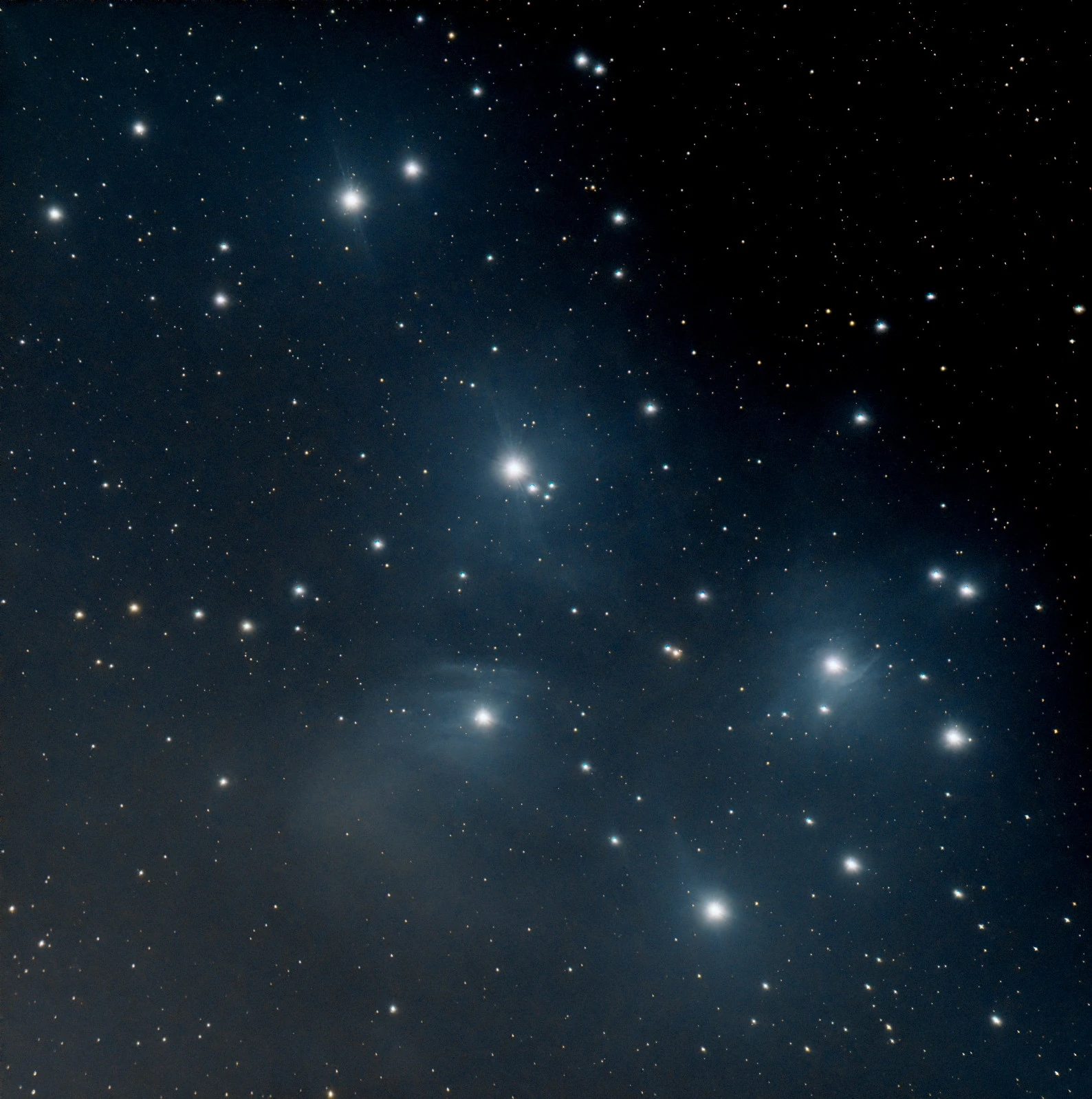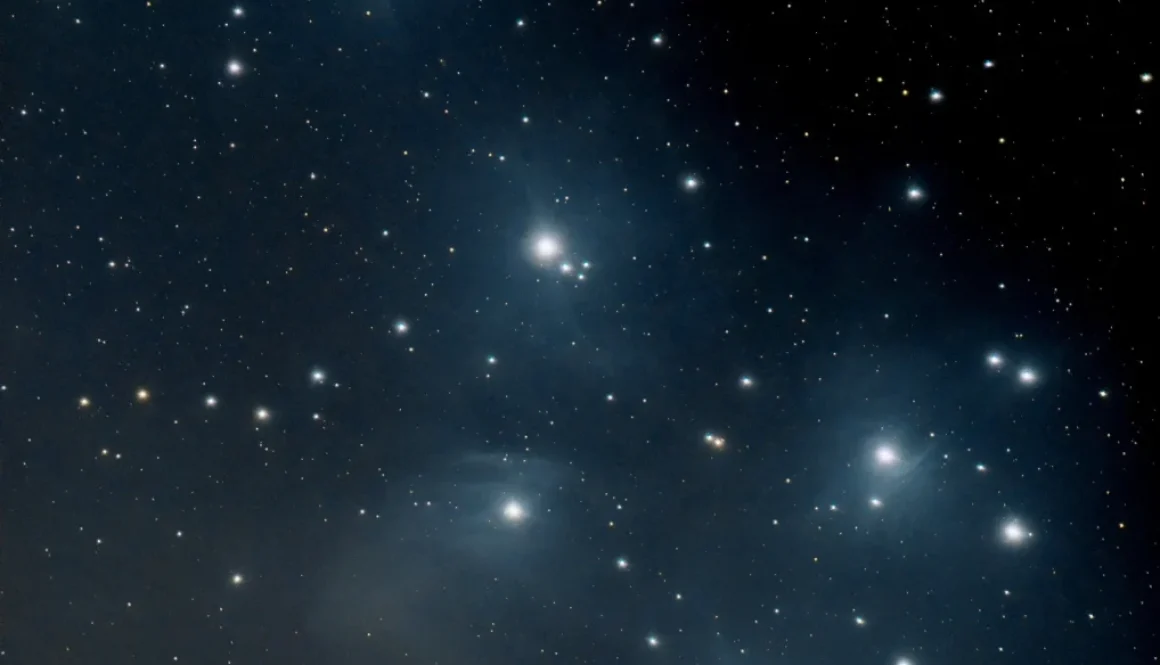Imaging the Pleiades from a light polluted sky
Imaging the Pleiades from a light polluted sky
In the last few weeks I was actively chasing the green comet, but finally yesterday I decided to go back to something more traditional and I did some DSO imaging from my light polluted sky.
With Messier 45, the Pleiades, as my target, my goal was to capture the blue nebulosity that surrounds this magnificent star cluster.
My imaging setup was equipped with an Explore Scientific ED80CF APO 80mm triplet refractor and a cooled ZWO ASI533MC PRO OSC camera, making for a 60 minutes of total integration time. Despite the challenges posed by high clouds and the Moon, my trusty Optolong L-Pro light pollution filter did its job and delivered good results. Below you can see the detailed setup I used for this imaging session.
Date: 2023-02-08
Location: my driveway in Richmond Hill (ON)
Outside temperature: +1°C
Scope and camera: Explore Scientific ED80CF APO, ZWO ASI533MC PRO (cooled at -10 °C), Optolong L-Pro 2″
Focuser: ZWO EAF
Mount: Celestron AVX
Guiding: Orion Mini 50mm, ZWO ASI224MC, IR cut filter, PHD2
Software: NINA, PixInsight, NoiseXTerminator, BlurXTerminator, GIMP
Total integration time: 60 minutes (30×120 seconds)
Calibration frames: 20 dark, 10 flat, 100 bias
Size: 1.35 x 1.35 deg
Radius: 0.954 deg
Pixel scale: 4.05 arcsec/pixel

